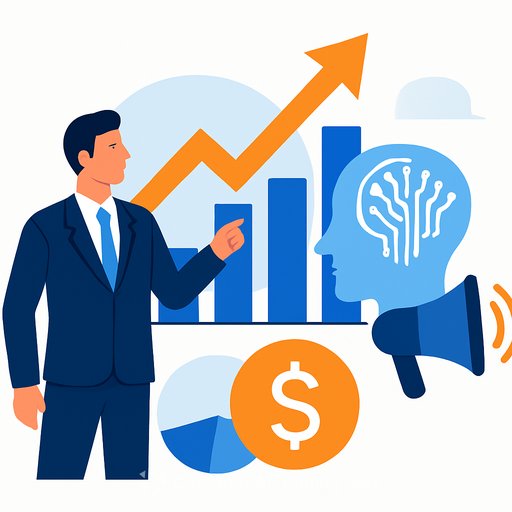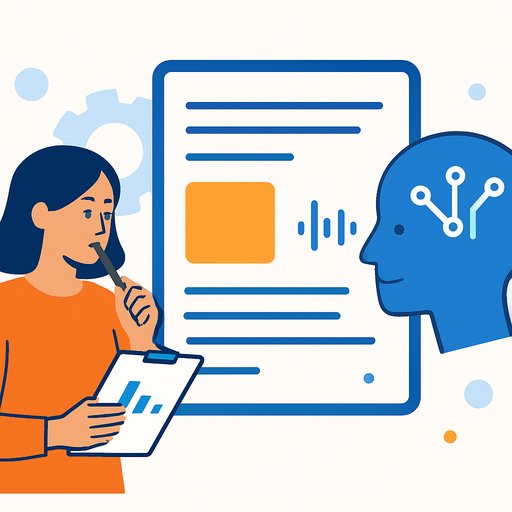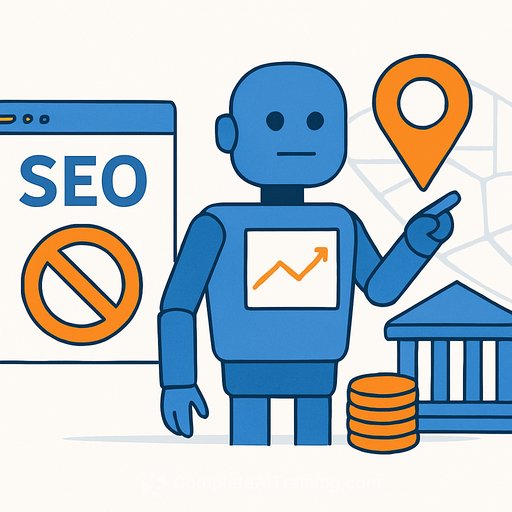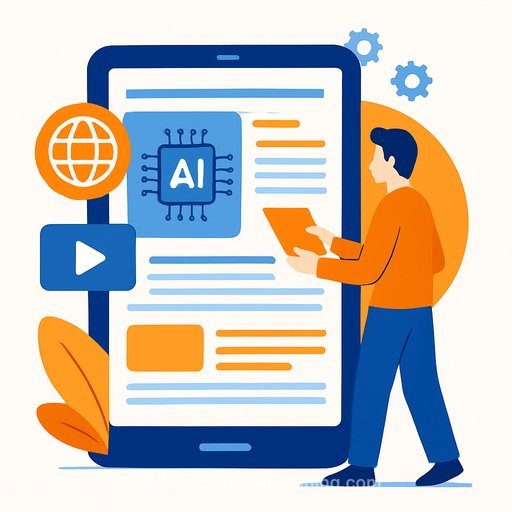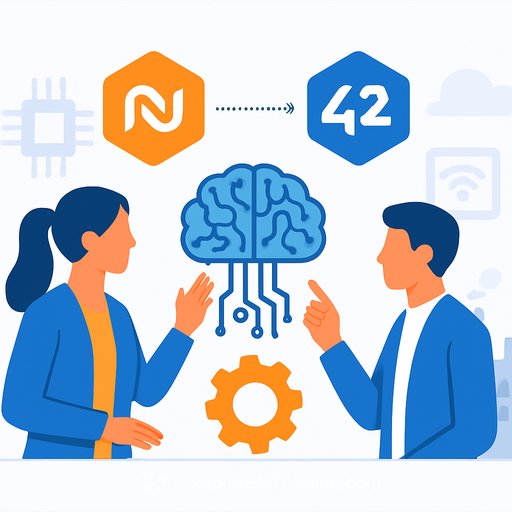16 New AI-Driven Roles Marketers and Product Teams Should Know
AI isn't "taking all the jobs." It's changing them - and spinning up new ones you can put to work right now. Big orgs like Walmart, Salesforce, Workday, and KPMG are hiring for roles that didn't exist a few years ago.
Roughly 1 in 5 professionals have a job title that didn't exist in 2000, and the pace is picking up with generative AI. Titles vary - the same job might show up under dozens of names - but the skills are getting clear.
If you build products or run marketing, this is your roadmap to the roles, what they do, and how to fold them into your team.
Why this matters for Marketing and Product
- Faster iteration: AI agents draft copy, comps, specs, and test plans. Humans review, refine, and ship.
- Lower costs: Content, research, and QA cycles shrink. Precision and volume go up.
- Risk and quality: New guardrails keep brand, data, and compliance intact.
- Org design: Clear ownership across human teams and AI agents stops chaos before it starts.
User Experience Roles
1) AI Conversation Designer
Builds the language, tone, and flow for AI interfaces so they're useful and on-brand. Think chat, support bots, guided flows, and voice.
- Skills: prompt design, user psychology, scriptwriting, A/B testing of conversational paths.
- Value: higher conversion and CSAT from chat and in-product assistants.
2) Knowledge Architect
Defines what an AI agent knows, how it acts, and how it uses company context. Ensures responses reflect policies, brand, and truth.
- Skills: knowledge graphs, schema design, domain modeling, data description in context.
- Value: fewer hallucinations, faster onboarding of new use cases.
3) Interaction Designer (Human-AI)
Designs the back-and-forth between people and agents. Sets trust cues, handoffs, and recovery paths.
- Skills: conversational UX, prompt patterns, explainability, onboarding flows.
- Value: smoother experiences that feel helpful, not robotic.
4) AI Artist Engineer
Uses generative tools to produce brand-ready visuals at scale. Covers concepting, production art, and variant testing.
- Skills: style prompting, image pipelines, brand systems, asset QA.
- Value: faster creative cycles for ads, landing pages, and product visuals.
5) Prompt Engineer
Builds agent personas, behaviors, and prompt strategies for specific use cases. Tunes prompts for quality, cost, and speed.
- Skills: LLM capabilities and limits, retrieval patterns, evaluation frameworks.
- Value: higher accuracy and fewer edge-case failures across marketing and product workflows.
Workforce and Operations Roles
6) Human-AI Collaboration Lead
Defines how teams and agents work together. Owns playbooks, job redesign, and performance standards.
- Skills: change management, org design, cross-functional leadership.
- Value: smooth adoption and measurable productivity gains.
7) Adoption Strategist
Aligns AI agents to business goals, team structures, and incentives. Drives rollout and usage.
- Skills: process transformation, communications, ethics and trust frameworks.
- Value: usage that sticks and produces results.
Technical Roles
8) Responsible Use AI Architect
Builds safeguards into AI systems. Ensures privacy, bias checks, and policy compliance are baked into the stack.
- Skills: ML architectures, cross-team engineering, policy-to-technical controls.
- Value: brand safety and fewer surprises in production.
9) Orchestration Engineer
Connects multiple agents, tools, and workflows. Sets autonomy levels and guardrails. Improves reliability over time.
- Skills: context and memory design, tool calling, fallback strategies, observability.
- Value: complex, end-to-end flows that actually work.
10) AI Engineer
Builds AI features and infrastructure for real products, even outside tech companies.
- Skills: Python, SQL, ML, data engineering, software development.
- Value: shipped features, not demos.
11) AI Architect
Designs the overall AI system: data pipelines, model choices, compute, and governance.
- Skills: system design, cloud architecture, data governance.
- Value: scalable, secure platforms that product and marketing can build on.
12) Data Annotator
Labels and structures data for training and evaluation. Critical for quality in niche domains.
- Skills: taxonomy creation, light scripting, LLM familiarity.
- Value: better accuracy for your specific brand and product cases.
Supervisory Roles
13) Head of AI
Owns AI strategy and delivery across the company. Balances product impact, risk, and platform investments.
14) Agent Operations Manager
Runs day-to-day performance of agents in production. Handles incidents, drift, and updates.
15) SVP of AI Strategy
Sets long-term direction and customer value. Ensures AI work solves real business problems responsibly.
16) EVP of AI
Executive leadership over AI transformation, platforms, and productivity gains. Connects product, design, data, and engineering.
How to put this to work in 90 days
- Map use cases: pick 3 high-value workflows in marketing and product (e.g., ad variant generation, onboarding flows, spec drafting).
- Assign owners: name a Human-AI Collaboration Lead and an Orchestration Engineer for pilots.
- Stand up a guardrail stack: Responsible Use AI Architect plus basic evals, PII controls, and brand rules.
- Measure what matters: time-to-ship, cost per asset, conversion lift, defect rate, and customer satisfaction.
- Close the skills gap: upskill current designers and PMs in prompt patterns and evaluation. Hire for gaps that can't be trained fast.
Signals you're ready to hire
- AI Conversation Designer: your bot's CSAT is flat or drop-offs spike mid-convo.
- Knowledge Architect: agents give on-brand tone but miss facts or policy context.
- Orchestration Engineer: you have multiple agents/tools but handoffs break.
- Agent Operations Manager: incidents repeat and model performance drifts without a clear owner.
Skills to build across your team
- Prompt patterns and evaluation frameworks
- Light scripting (Python) for glue work
- Data quality basics: taxonomies, labeling, retrieval
- Ethics, safety, and brand governance for AI features
Helpful resources
For training by role and skill, explore these:
Further reading
The takeaway: treat these roles as building blocks. Start small, set clear owners, measure outcomes, and scale what works.
Your membership also unlocks:



